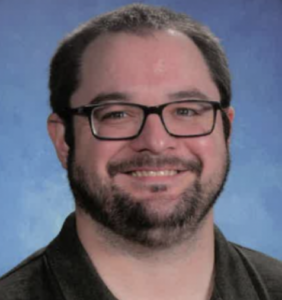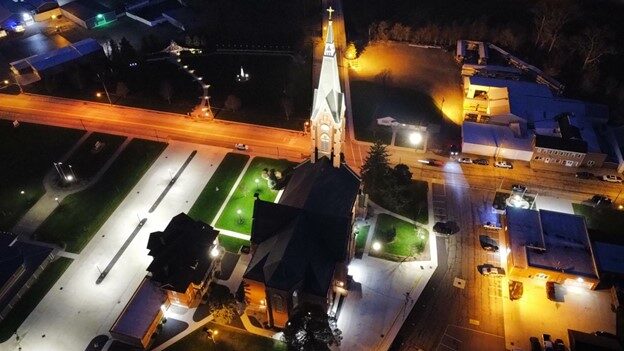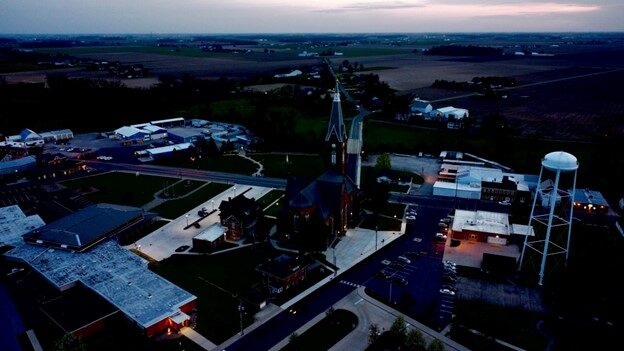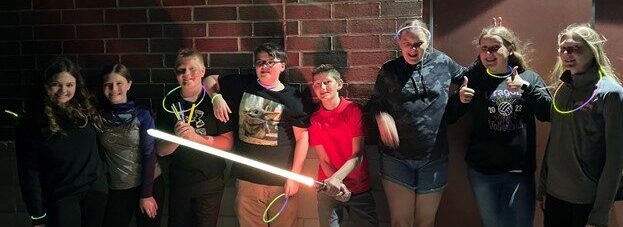Making lessons relevant to students is one of many challenges that teachers face. Educators know that helping students find a personal connection to what they are learning can keep them engaged in the lesson. And, if students feel they can make a difference through what they learn, all the better.

These are the aims of the year-long STEM Rural Ohio Fellowship offered by the Ohio STEM Learning Network. The fellowship is open to any rural educator in the state. Participants will learn about their local STEM educational landscape, reflect on community challenges and make new connections. And, the study of place-based learning will guide teachers in developing solutions to needs in their home communities.
During the past school year, Chris Brown, junior high science teacher in the Ottawa-Glandorf Local School District, took part in the STEM Rural Ohio Fellowship. He agreed to answer a few questions about the experience.
Q: Tell us about your school, the students that it serves and the community in which it is located.
A: I teach at Glandorf Elementary in Putnam County in northwest Ohio. It is a rural K-8 school in the small town of Glandorf.
Q: Why did you apply for the STEM Rural Ohio Fellowship?
A: I had participated in the Ohio Rural Educators Program the previous school year, and after attending a STEM professional development and hearing Sandy Guinto (STEM relationship manager for the Ohio STEM Learning Network) speak, the STEM Rural Ohio Fellowship seemed like the logical next step.
Applications for the STEM Rural Ohio Fellowship close August 11
During the year-long STEM Rural Ohio Fellowship, the participants will complete an in-depth learning experience including:
- multiple workshops to explore STEM best practices for your classroom held in either Southeast or Northwest Ohio
- virtual “booster” sessions to support classroom place-based learning
- collaborative experiences to connect with STEM leaders and veteran teachers to build a professional network
- opportunities to visit innovative Ohio STEM or STEAM designated schools
Q: What was your program experience like – workshops, statewide meetings, etc? What part(s) did you find the most helpful/eye-opening/challenging?
A: We had a few meetings with our Northwest Ohio fellowship cohort at our local Educational Service Center supplemented with Zoom meetings in between with the goal of developing a project-based learning (PBL) unit.
We had a final meeting where we met the southeast Ohio fellowship cohort and shared our projects with one another. I struggled deciding on what to do my PBL on, but Sandy and Naz were great when you needed support or to bounce an idea off of someone. Seeing all the amazing projects created by the other teachers was awesome. Knowing we can always reach out to one another is a plus of the fellowship.
Q: During the program, what did you learn about your community, and how will that change how you teach your students? Were you able to target any needs or challenges in your community and decide how to meet them?
A: I’m not originally from my school’s community, like many of my coworkers are, so I didn’t know a lot of people or who to contact for resources, etc. As I reached out while working on my PBL, I found the community is very receptive to working with and doing things for the students.
I want to connect what I teach as much as I can to the local community and have the students solve real world problems. The students and I were able to educate the community about light pollution and provide them with an experience of what the night sky could be if light pollution was reduced in our area.
Q: Talk more about the PBL you created as part of the fellowship experience.
A: My students were actually the ones who came up with my project. We were outside doing another lesson, and they began asking questions about why we have some of the lights on our school campus (see attached presentation- slide 3).
Rather than just give them an answer or brush it off because we weren’t talking about that topic, I decided to see if they wanted to explore it more. After giving them a short introduction on light pollution and telling them about International Dark Sky Week, they decided they wanted to participate and try to get the school and community involved.
With my help, they planned an event, talked to school and community leadership to persuade them to turn off the lights during the event and created various products to educate the community about light pollution and offer suggestions for how it can be reduced.
There was a sense of pride with what they were able to accomplish. I still run into people in the community that bring it up. The students are already asking what they can do this upcoming school year to top it.


Q: Did you make useful connections with fellow educators or others through the program? How have these connections helped you as a teacher?
A:I got to know some other teachers from my county including the STEM teacher Lori Schroeder at our other local elementary school. We’ve continued working together in the Teacher Academy, are continually working to improve our district junior high science program and want to do some inter-school projects/events in the years to come.
Being able to work with teachers that have the same mindset and goals as I do has been a tremendous opportunity. I have learned so much and got a lot of great ideas.
Q: Would you recommend any changes in the fellowship program going forward?
A: I think it would be great to include rural areas in southwest and northeast Ohio as well and make a statewide connection. Also, some sort of alumni event might be enjoyable once a few years have passed.
Q: Who would you recommend the program to?
A: Any teacher in a rural school who feels “on an island” when it comes to STEM. Additionally, I think it would be great for new teachers or those not originally from their schools’ area as it helps develop community connections.
